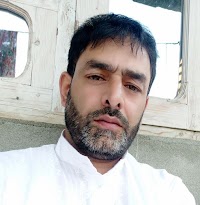Our Past II | JANDKNCERT
New Kings and Kingdoms | History VII | Questions and Answers
Chapter 2: New Kings and Kingdoms
Let’s Recall
Question 1. Match the
following:
Answer:
1. Gurjara-Pratihara
– Kanauj
2. Rashtrakutas
– Manyakheta
3. Palas
– Bengal
4. Cholas
– Tamil Nadu
5. Chahamanas
– Delhi and Ajmer
Question 2. Who were
the parties involved in the "tripartite struggle"?
Answer: The Gurjara-Pratiharas, Rashtrakutas, and Palas fought for
control over Kanauj.
Question 3. What were
the qualifications necessary to become a member of a committee of the sabha in
the Chola Empire?
Answer:
·
Must be a
landowner
·
Aged between 30
and 70
·
Knowledge of
Vedas
·
Must be honest
and have a good character
Question 4. What were
the two major cities under the control of the Chahamanas?
Answer: Delhi and Ajmer.
Let’s
Understand
Question 5. How did the
Rashtrakutas become powerful?
Answer: The Rashtrakutas were initially subordinate to the Chalukyas of
Karnataka. However, in the eighth century, Dantidurga, a Rashtrakuta chief,
overthrew his Chalukya overlord and established his own kingdom. They expanded
their territory through successful military conquests and gradually emerged as
a powerful dynasty in the Deccan region.
Question 6. What did
the new dynasties do to gain acceptance?
Answer: To gain acceptance, the new dynasties performed rituals such as
the hiranya-garbha, which was believed to grant them Kshatriya status. They
also gave land grants to Brahmanas, built temples, and promoted religious
activities. In addition, they adopted grand titles to display their power and
authority and strengthened their legitimacy through patronage of religion and
culture.
Question 7. What kind
of irrigation works were developed in the Tamil region?
Answer: In the Tamil region, various types of irrigation works were
developed, including the construction of wells, tanks, and canals. In areas
near the Kaveri River, embankments were built to prevent flooding, and sluice
gates were installed to regulate water flow. These irrigation systems were
often maintained by the local people, especially by the villagers who took
collective responsibility for their upkeep.
Question 8. What were
the activities associated with Chola temples?
Answer: Chola temples were not only places of worship but also served as
cultural and administrative centres. They were used for conducting religious
rituals and festivals, and they supported music, dance, and learning. Temples
also managed large amounts of land and collected revenue. They provided
employment to a wide range of people, including priests, temple servants,
artisans, and workers involved in temple maintenance and rituals.






.webp)




Leave your comment here.